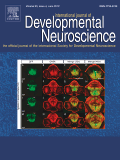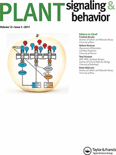
PHYSIOLOGY & BEHAVIOR
Scope & Guideline
Bridging the Gap Between Neuroscience and Psychology
Introduction
Aims and Scopes
- Physiological Mechanisms of Behavior:
Research that investigates how physiological processes, such as hormonal changes, neurotransmitter activity, and metabolic functions, influence behavior in both humans and animal models. - Behavioral Responses to Environmental Changes:
Studies focusing on how organisms adapt their behavior in response to changes in their environment, including stressors, dietary modifications, and social interactions. - Neurobehavioral Studies:
Explorations of the link between neural activity and behavioral outcomes, utilizing techniques such as neuroimaging, electrophysiology, and pharmacological interventions. - Impact of Diet and Nutrition on Behavior:
Research examining the effects of dietary patterns, nutritional interventions, and specific food components on cognitive functions, mood, and overall behavior. - Developmental and Sex Differences in Behavior:
Investigations into how behavior varies across developmental stages and between sexes, including studies on stress responses, learning, and social interactions. - Clinical Applications of Behavioral Research:
Research that translates findings from physiological and behavioral studies into clinical practices, particularly in understanding and treating psychological and physiological disorders.
Trending and Emerging
- Interdisciplinary Approaches to Eating Behavior:
There is a growing trend toward integrating insights from psychology, neuroscience, and nutrition to better understand the complexities of eating behaviors, including how emotional and cognitive factors interact with physiological responses. - Impact of Technology on Behavior:
Research exploring the effects of modern technology, including virtual reality and mobile health applications, on behavioral responses and physiological outcomes is gaining traction. - Gut-Brain Axis Research:
Studies focusing on the gut-brain axis and its implications for behavior, mental health, and overall physiology are rapidly emerging, highlighting the significance of microbiota and metabolic signals in influencing behavior. - Behavioral Neuroscience in Clinical Contexts:
There is a notable increase in research applying behavioral neuroscience findings to clinical settings, particularly in understanding and treating mental health disorders through physiological and behavioral interventions. - Social and Environmental Influences on Behavior:
Emerging themes emphasize the role of social factors and environmental contexts in shaping behavior, particularly in relation to stress, motivation, and health-related outcomes.
Declining or Waning
- Traditional Animal Models in Behavior Research:
There has been a notable decline in studies relying solely on traditional animal models for behavior analysis, as researchers increasingly seek more complex and ecologically valid models that better mimic natural environments. - Single-Factor Explanations of Behavior:
Research focusing on isolated physiological factors as sole determinants of behavior is waning. There is a growing recognition of the multifactorial nature of behavior, integrating genetic, environmental, and social influences. - Static Measurement Techniques:
The use of static measurement techniques, such as simple behavioral tests without consideration for dynamic interactions, is decreasing. More sophisticated, real-time monitoring methods are becoming preferred. - Basic Taste Perception Studies:
Investigations centered solely on basic taste perception are less common, as the field expands to include more integrative approaches that consider the interplay of taste with other sensory modalities and psychological factors.
Similar Journals

JOURNAL OF PSYCHOPHYSIOLOGY
Decoding the Physiological Foundations of Psychological ProcessesJOURNAL OF PSYCHOPHYSIOLOGY, published by Hogrefe Publishing Corp, serves as a crucial platform for the dissemination of research in the interdisciplinary fields of neuropsychology, physiological psychology, and neuroscience. With an ISSN of 0269-8803 and an E-ISSN of 2151-2124, this journal has been a staple in the academic community since its inception in 1987 and will continue to publish impactful research until at least 2024. Despite the absence of Open Access, the journal maintains a significant presence, holding Q3 and Q4 quartile rankings in relevant disciplines according to the 2023 metrics. Researchers and practitioners benefit from the journal's robust focus on integrating psychophysiological research with practical applications, contributing to a better understanding of psychological processes through physiological insights. As evident from its Scopus rankings, the JOURNAL OF PSYCHOPHYSIOLOGY is dedicated to fostering scholarly dialogue and advancing knowledge in the field, making it an essential resource for anyone invested in the intricacies of human behavior and the physiological underpinnings thereof.

Neuropeptides
Fostering Collaboration in Cellular and Molecular NeuroscienceNeuropeptides is a prestigious, peer-reviewed journal published by Elsevier, focusing on the critical role of neuropeptides in various biological processes and their implications in cellular and molecular neuroscience, endocrinology, and neurology. With an impact factor reflecting its influence in the field and a diverse audience ranging from researchers to healthcare professionals, the journal serves as an essential platform for the dissemination of groundbreaking research from 1980 to 2024. Adhering to high academic standards, Neuropeptides holds a Q3 ranking in Cellular and Molecular Neuroscience and Endocrine and Autonomic Systems, alongside a solid Q2 ranking in both Endocrinology and Neurology. This positions the journal at the forefront of its disciplines, contributing valuable insights into the understanding of neuropeptide functions in health and disease. By not operating as an Open Access journal, it ensures sustainability in the publishing process while upholding rigorous review standards. Researchers, professionals, and students are encouraged to engage with the findings published in this journal, which plays a vital role in advancing knowledge and fostering collaboration within the neuroscientific community.

Frontiers in Behavioral Neuroscience
Pioneering Research in Behavioral and Cognitive Neuroscience.Frontiers in Behavioral Neuroscience is a distinguished journal published by FRONTIERS MEDIA SA, specializing in the intricate relationship between behavior and the underlying neural processes. Established in 2007, this Open Access journal, based in Switzerland, aims to disseminate high-quality, peer-reviewed research that spans both Behavioral and Cognitive Neuroscience, as well as Neuropsychology and Physiological Psychology. With an impressive ranking in the top quartiles of these categories—Q2 in Behavioral and Cognitive Neuroscience and Q1 in Neuropsychology—this journal plays a pivotal role in advancing the understanding of complex behavioral phenomena through a neuroscientific lens. The journal's commitment to open accessibility ensures that groundbreaking findings are available to a wide audience, facilitating collaboration and innovation within the scientific community. As the field continues to evolve, Frontiers in Behavioral Neuroscience remains at the forefront, supporting researchers, professionals, and students alike in their pursuit of knowledge and understanding in this dynamic discipline.

INTERNATIONAL JOURNAL OF DEVELOPMENTAL NEUROSCIENCE
Exploring the Intricacies of Neurological DevelopmentThe INTERNATIONAL JOURNAL OF DEVELOPMENTAL NEUROSCIENCE is a critical platform for disseminating cutting-edge research in the field of developmental biology and neuroscience. Published by WILEY, this esteemed journal has been contributing to the academic community since its inception in 1983, and continues to serve as a vital resource through to 2024. With an impact factor that reflects its influence in the field—ranking in Q3 for both Developmental Biology and Developmental Neuroscience—this journal presents an opportunity for researchers, professionals, and students alike to engage with pioneering studies and extend their understanding of complex developmental processes. Although not open access, the journal provides an essential repository of knowledge for those seeking to explore the nuances of neurological development and related disciplines. It actively supports academic discourse and research dissemination, thereby playing a significant role in advancing our collective understanding of developmental neuroscience.

ACTA ETHOLOGICA
Connecting Researchers in Animal Science and ZoologyACTA ETHOLOGICA, published by Springer Heidelberg, is a leading journal in the fields of Animal Science and Zoology, as well as Ecology, Evolution, Behavior, and Systematics. With an ISSN of 0873-9749 and an E-ISSN of 1437-9546, this journal has established itself as a notable platform for innovative research and review articles since its inception in 1998. As of 2023, it holds a Category Quartile of Q3 in both its primary categories, showcasing its commitment to advancing knowledge within these scientific domains. The journal aims to facilitate the dissemination of cutting-edge research on animal behavior and ecology, fostering collaboration among researchers, professionals, and students. While it does not currently offer Open Access options, ACTA ETHOLOGICA remains crucial for those looking to stay informed about the latest developments and trends in ethology. For inquiries, the journal's editorial office is located at Tiergartenstraße 17, D-69121 Heidelberg, Germany.

Plant Signaling & Behavior
Innovating Insights into Plant Signaling DynamicsPlant Signaling & Behavior is a prestigious journal published by TAYLOR & FRANCIS INC, dedicated to advancing the understanding of the complex signaling mechanisms and behavioral responses of plants. With an ISSN of 1559-2316 and an E-ISSN of 1559-2324, it has firmly established itself in the field of Plant Science, earning a Q1 ranking in the 2023 category quartiles and ranking #83 out of 516 in Agricultural and Biological Sciences, placing it in the 84th percentile according to Scopus metrics. The journal serves as a vital platform for researchers and professionals looking to publish innovative studies and reviews that explore the intricate relationships between plant behavior and environmental signaling. With coverage spanning from 2006 to 2024, Plant Signaling & Behavior not only enhances academic discourse but also supports the growing interdisciplinary nature of plant sciences. Although the journal is not open access, it remains a significant resource for students, researchers, and practitioners aiming to deepen their understanding of plant signaling and its implications for ecology and agricultural practices.

APPLIED ANIMAL BEHAVIOUR SCIENCE
Inspiring excellence in applied animal behavior research.APPLIED ANIMAL BEHAVIOUR SCIENCE, published by Elsevier, stands as a leading academic journal in the domains of Animal Science and Zoology, with a commendable impact factor reflecting its significance in the field. Established in 1984, this esteemed journal is committed to disseminating cutting-edge research that enhances understanding of animal behavior, welfare, and management practices. With an H-Index indicative of its influence and a ranking of #85/490 in Scopus for Agricultural and Biological Sciences, this journal is a pivotal resource for experts focusing on both companion and food animals. While it currently operates under a subscription model, it continues to serve as a robust platform for stimulating discourse and advancing knowledge through high-quality peer-reviewed articles. The journal's reach is global, and it plays a vital role in guiding future research and policy in animal behavior science across various disciplines.

JOURNAL OF COMPARATIVE PHYSIOLOGY A-NEUROETHOLOGY SENSORY NEURAL AND BEHAVIORAL PHYSIOLOGY
Exploring the Intricacies of Neural and Behavioral AdaptationsJOURNAL OF COMPARATIVE PHYSIOLOGY A-NEUROETHOLOGY SENSORY NEURAL AND BEHAVIORAL PHYSIOLOGY, published by Springer Heidelberg, is a leading journal in the fields of animal science and zoology, providing vital insights into the neuroethology, sensory processing, and behavioral physiology of various species. With an impressive H-index, the journal has established itself as a credible source of high-quality research since its inception in 1974, maintaining relevance through to 2024. Recognized for its rigorous editorial standards, the journal is categorized in the Q1 rank for Animal Science and Zoology, Q3 in Behavioral Neuroscience, and boasts competitive rankings across several other disciplines, indicating its broad impact within the scientific community. While the journal is currently not open access, its articles can be crucial for advancing knowledge in comparative physiology and fostering interdisciplinary discussions among researchers, professionals, and students alike. By publishing original research, reviews, and critical commentaries, the journal continues to be a cornerstone for those exploring the intricate connections between neural mechanisms and behavioral adaptations.

Behavioral and Brain Functions
Unraveling the Connections Between Brain and BehaviorBehavioral and Brain Functions is a leading Open Access journal published by BMC, dedicated to advancing the field of behavioral neuroscience, cognitive neuroscience, and biological psychiatry since its inception in 2005. This esteemed journal, based in the United Kingdom, has established itself as a vital resource for researchers and professionals, boasting a remarkable influence demonstrated by its Q1 and Q2 rankings across multiple relevant categories. With its commitment to providing unrestricted access to high-quality research, the journal facilitates the dissemination of significant findings in understanding the complex interactions between behavior and brain function. The journal ranks impressively within the Scopus database, positioning itself among the top-tier publications in its categories, making it an essential platform for academic discourse and innovation. As it converges through 2024, Behavioral and Brain Functions continues to play a crucial role in shaping the forefront of neuroscientific inquiry, inviting contributions that challenge our understanding and promote further exploration in these dynamic fields.

BEHAVIORAL NEUROSCIENCE
Decoding Behavior Through a Neuroscientific LensBehavioral Neuroscience, published by the American Psychological Association, is a leading academic journal in the field of behavioral neuroscience, which focuses on the biological underpinnings of behavior across various contexts. Established in 1983, this journal has been a vital resource for researchers and professionals seeking to understand the intersection between neural processes and behavioral patterns. With an impressive impact factor that positions it in the Q2 category of Behavioral Neuroscience for 2023, it ranks 58th out of 88 journals in its field, showcasing its significance as a contributor to scientific literature. The journal fosters the dissemination of high-quality research and innovative theories that address critical questions in neuroscience, providing a platform for interdisciplinary collaboration. While it does not offer open access, the extensive distribution through academic libraries ensures wide availability for students, practitioners, and researchers alike. By continuing to publish cutting-edge articles through 2024 and beyond, Behavioral Neuroscience remains essential for those looking to stay at the forefront of advancements in understanding the biological mechanisms of behavior.